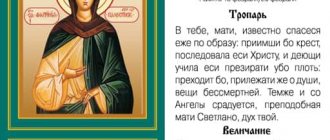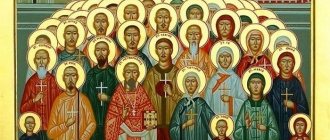Jesus
The Son of Man is called the Savior for a reason. Jesus Christ is the embodiment of all Christian ideas, so the truth must be sought in the Greek form of the concept “Yeshua”. The approximate meaning of this term is “help of God.” It turns out that the Savior is a synonym. The name may sound different in different languages (there is no Russian equivalent):
- Jesus;
- Jesus;
- Joshua;
- Gesu.
There is a perception of this name that associates Jesus Christ with influence and power. The character of a person with this name is masculine, decisive and authoritarian. At the same time, Yeshua has generosity, gentleness and friendliness. And here are other features inherent in the owners of the name:
- loyalty;
- honesty;
- internal balance;
- menacing energy;
- curiosity;
- sociability.
Love and family
Whether Jesus realizes it or not, marriage for him means a long-term partnership. The secret of the name hides the amazing ability of its bearer to love unconditionally; the most sublime love and sincere affection can be born in his heart. However, with all this, the love of freedom in character does not dull. Such a person does not tolerate attacks on his precious freedom.
As soon as he feels that the marriage bonds are beginning to turn into heavy shackles, he reacts to this very violently and unequivocally. This situation can easily destroy a family idyll. Therefore, he should choose a wise and far-sighted woman as his wife, who will not remind him too often of his duty and responsibilities to his family. In this case, the family life of a man with this name will be calm, happy and long.
Christ
“Anointed” is how the title of Jesus is translated from Greek. But in Hebrew, the term “Mashiach” is associated with the honorary title of the Messiah. In the old days, a prophet or high priest could be called anointed. Kings were also designated by this word. The name is associated with the rite of anointing - covering the head of the chosen one with consecrated oil (chrism). This ritual action seemed to introduce Jesus to the great sacraments and service to the people of Israel.
Public ministry forced the Son of God to combine three roles - prophet, high priest and ruler. Jesus cast out demons, commanded the elements, performed miracles - this showed his royal essence. As the high priest, Christ sacrificed himself and was crucified. The prophetic hypostasis manifested itself in such a way that Jesus had to expose evil and communicate the divine will to people. However, no one anointed Christ with myrrh - in the literal sense of the word. They received a blessing from the Holy Spirit, who was sent to earth by God the Father.
Notes
- God's human face: the Christ-icon
by Christoph Schoenborn 1994 ISBN 0-89870-514-2 page 154 - Sinai and the Monastery of St.
Catherine by John Galey 1986 ISBN 9774241185 page 92 - ↑ 1 2 Dyachenko G.
Complete Church Slavonic dictionary. - Reprint reproduction of the 1900 edition - M.: Father's House, 2006. - P. 796. - 1120 p. — 5000 copies. - [www.hramvrs.aaanet.ru/obshestvo/issledovan/kirill.htm#_Toc153732813 I. I. Ulitchev. Christology of St. Cyril of Alexandria in the interpretation of modern Catholic and Protestant authors.]
- [www.bogoslov.ru/text/2655545.html Novikov V.V. On the immutability of the Christological teaching of St. Cyril of Alexandria. July 4, 2012]
- Jesus of history, Christ of faith
by Thomas Zanzig 2000 ISBN 0-88489-530-0 page 314 - [www.etymonline.com/index.php?term=messiah Etymology Online: "messiah"]. etymonline.com. Retrieved November 19, 2010. [www.webcitation.org/65Aq8I6MQ Archived from the original on February 3, 2012].
- ↑ 12
Greek-Russian dictionary / A.D. Weisman. — St. Petersburg: Greco-Latin Cabinet of Yu.A. Shichalina, 1991. - P. 1353. - 1370 p. — 50,000 copies. — ISBN 5-01-003637-1. - Greek-Russian Dictionary of the New Testament / Kuznetsova V.N. - M.: Russian Biblical Society, 2000. - P. 228. - 238 p. — 5000 copies. — ISBN 5-85524-030-4 (Russian), 3-438-6008-6 (English).
- Textbook of the Greek of the New Testament / J. Gresham Machen. - M.: Russian Bible Society, 2000. - P. 19. - 237 p. — 5000 copies. — ISBN 5-85524-029-0.
- The Greek New Testament / Barbara Aland, Kurt Aland, Johannes Karavidopoulos, Carlo M. Martini and Bruce M. Metzger. - Stuttgart: Deutsche Bibelgesellschaft, 1998. - P. 811. - 918 p. — ISBN 3-438-05110-9.
- Dictionary of synonyms of the Russian language. Practical reference book / Alexandrova Zinaida Evgenievna. - Moscow: Russian language, 1981. - P. 496. - 50,000 copies. — ISBN 5-200-00333-4.
Who is Jesus Christ
To understand the essence of God and man, you need to know about the existence of the Trinity. Orthodoxy claims that the Lord is triune. There is a Son, a Father, and also a Holy Spirit. Jesus Christ is the Son of the Lord, crucified in the form of a man by his own people. Christ is born directly in eternity, beyond the boundaries of human existence. The closest analogy would be the light that caused the radiance. Why is the name of Jesus associated with redemption and help provided to people? Here are a few facts you need to know:
- To save people from sins, the Lord chose human nature.
- The Virgin Mary became pregnant with Jesus Christ by obeying the Word of the Most High.
- Christ originally had the divine essence and never lost it.
- The fusion of two natures led to the emergence of the Perfect Man.
- All the names of the Son of Man (in different languages) reflect his deepest essence - help to the human race.
The fusion of human and divine nature in Jesus is characterized by inseparability, inseparability and immutability. What does this mean in practice? The name of Jesus (and its divine essence) reflects the Lord’s desire to remove the burden of accumulated sins from humanity. Being part of the Trinity and possessing a divine nature, the Messiah continues to remain human. The will also has a double structure. An important point: human will should not contradict the divine.
If we look at the names of the Savior’s ancestors along the human line, we get an interesting picture. Being the son of the Virgin Mary, Jesus is also a descendant of David. This biblical character was a famous prophet and ruler of the Israelites. Now the names of the parents of the God-Man are sacred to every Christian. But it is important to understand that Joseph did not participate in the conception of his son - he was born thanks to the Word of the Lord.
Literature
- Cullmann Oscar.
The Christology of the New Testament. - Louisville: Westminster John Knox Press, 1959. - ISBN 978-0-664-24351-7. (English) - Fuller Reginald H.
The Foundations of New Testament Christology. - New York: Scribners, 1965. - ISBN 0-684-15532-X. (English) - Greene Colin JD
Christology in Cultural Perspective: Marking Out the Horizons.
- Grand Rapids: Eerdmans Publishing ( English
), 2004. - ISBN 0-8028-2792-6. (English) - Kingsbury Jack Dean.
The Christology of Mark's Gospel. - Philadelphia: Fortress Press, 1989. - ISBN 978-1-4514-1007-5. (English) - O'Collins Gerald.
Christology: A Biblical. - Oxford: Oxford University Press, 2009. - ISBN 978-0-19-955787-5. (English) - Bellet JG
(1957). La gloire morale du seigneur Jésus Christ. Vevey, Suiza: Editions du Dépot de Biblies et Traites Chrétiens. (French) - Carballosa E. L.
(1982). La deidad de Cristo. Barcelona, España: Portavoz Evangelico. (Spanish) - Flores J.
(1983). El hijo eterno. Tarrasa, Spain: Clie. (Spanish) - Guardini Romano
(2006). El Señor. Meditaciones sobre la persona y la vida de Jesucristo (2ª edición). Madrid, Spain: Cristiandad. (Spanish) - Lacueva F.
(1979). La persona y la obra de Jesucristo. Tarrasa, Spain: Clie. (Spanish) - Llorca Bernardino
(1996). Historia de la Iglesia católica (7ª edición). Madrid, España: Biblioteca de Autores Cristianos. (Spanish) - Martinez JM
(1970). Cristo el incomparable. Tarrasa, Spain: Clie. (Spanish) - Grupo Nelson
(2007). Reina Valera: Biblia del diario vivir. Nashville, Tennessee, Estados Unidos: Sociedades Biblicas Unidas. (Spanish) - Sanz C.
(1979). Jesucristo. Valencia, España: Depósito de Literatura. (Spanish) - Wallis A.
(1968). ¿Quién es Jesús de Nazaret?. Madrid, Spain: CLC. (Spanish) - 『岩波キリスト教辞典』岩波書店、ISBN 4-00-080202-X (Japanese)
Why did Christ appear?
You have all heard the phrase: “The Lord is salvation.” Why do they say that, what does it mean? When creating the Son, the All-Good Lord endowed him with a piece of his power. Once upon a time, people resisted the divine will - the Fall happened, and we all became mortal. Since the expulsion of the first people from Eden, sins have continuously accumulated. Humanity could no longer produce holy prophets—the situation needed urgent correction.
Theologians name only one way to restore balance - sending the Savior to the people. Christ lived among ordinary Israelites and preached the word of his Father. Many received healing in Christ, great truths were revealed to them. It turns out that the Savior appeared to help us all. And for the same purpose he sacrificed himself on the cross.
God believes in man
...God appeared before us because He wanted to become one of us, so that not a single person on earth would be ashamed of his God: as if God was so great, so far away that there was no approach to Him. He became one of us in our humiliation and in our deprivation; <...> through His love, through His understanding, through His forgiveness and mercy, He became close to those whom others rejected because they were sinners. He did not come to the righteous, He came to love and seek sinners. He came so that not a single person who has lost respect for himself could think that God has lost respect for him, that God no longer sees him as someone worthy of His love.
On the headband: Titian. Christ carrying the cross (fragment)
You can read these and other materials in the special issues “Christmas Nativity Scene” - a joint project of the magazine “Foma” and the campaign group “Kardos”.
Savior
To save humanity, Jesus demonstrated true self-denial - he deliberately went to execution. The Son of Man began to preach at the age of thirty - he walked around the country and planted the Word of God everywhere. This could cause problems, but the Messiah was relentless.
Here is what is known about the activities of this biblical character:
- Performed numerous miracles.
- He was not afraid of hard work and long travels.
- He attracted followers who were ready to do anything for him.
- Changed the world around me for the better.
- He was crucified on the cross, which means martyrdom.
- He later resurrected and was taken up into heaven.
How did Christ deliver man from the power of sin, the corruption of death and the devil?
Coming out to preach at the age of thirty, Christ taught by word and example. Confirming His Divine mission and dignity, He more than once performed miracles and signs, including healings from illnesses and resurrections. The apogee of the ministry was the sacrifice of Himself on the Cross in atonement for sins: “He Himself bore our sins in His body on the tree, so that we, having been delivered from sins, would live for righteousness: by His stripes you were healed.” (1 Peter 2:24-25)
Having voluntarily accepted the Passion of the Cross and death, the Son of God descended in soul to hell, bound Satan, destroyed the souls of the righteous and, trampling death, was resurrected. Then He repeatedly appeared to His disciples and on the fortieth day He ascended to Heaven, paving the way to the Kingdom of God for all who would follow Him. On the Day of Pentecost, the Holy Spirit descended on the apostles, who has been continuously present in the Church since then. By joining the Church of Christ and living an active church life, a person draws closer to God, is sanctified, deified, and as a result is rewarded with eternal blissful life in Heaven.
Redeemer
Why is this legendary prophet and God-man called the Redeemer? A word with this meaning is present in Hebrew, it sounds like “goel”. The Law of Moses provided for the possibility of redemption of the estate by the debtor's closest relative from creditors. In addition, the “goel” had the right to kill anyone who dared to take the life of his relative. Of course, this approach had nothing in common with Jesus and his teaching.
If we draw a parallel with the Law of Moses, a simple fact becomes obvious: Jesus redeemed the lost grace with his own blood and suffering. The Redeemer came into the world for the sole purpose of restoring the balance of power. What the Son of God did by crucifying himself on the cross dealt a serious blow to Satan and gave us all hope of salvation.










